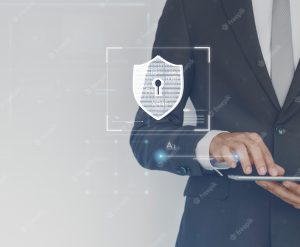Embracing Passwordless Services: Unlocking Convenience and Security
In today’s digital age, the traditional username-password combination has long been the standard method for accessing online services and accounts. However, the increasing sophistication of cyber threats and the growing number of online platforms we use daily have exposed the limitations and vulnerabilities of this approach. As a result, a new and innovative solution has emerged – passwordless services. In this article, we will delve into the significance of passwordless services, explore its benefits, and examine the various authentication methods available.
The Evolution of Passwordless Services
Password less services represent a paradigm shift in how we authenticate ourselves online. Instead of relying on memorizing and frequently changing passwords, these services use alternative methods to verify users’ identities. The concept of password less authentication has been around for some time, but recent technological advancements have made it more feasible and widely adopted.

Advantages of Going Passwordless
a. Enhanced Security: Password less services reduce the risk of unauthorized access and data breaches. Without passwords, there are no credentials to steal or guess, making it challenging for cybercriminals to compromise accounts.
b. Convenience and User Experience: Bid farewell to password-related frustrations, such as forgotten passwords and frequent resets. Password less authentication streamlines the login process, offering users a seamless and user-friendly experience.
c. Multi-Factor Authentication (MFA) Integration: Many passwordless solutions support multi-factor authentication, adding an extra layer of security by combining different verification methods like biometrics and one-time codes.
Exploring Passwordless Authentication Methods
a. Biometric Authentication: This method utilizes unique biological characteristics, such as fingerprints, facial recognition, and iris scans, to verify a user’s identity. Biometrics offer a high level of accuracy and are convenient for users.
b. One-Time Codes: Instead of using fixed passwords, passwordless services can generate one-time codes sent to the user’s registered email or mobile device. These codes are time-sensitive and provide secure access.
c. Public/Private Key Cryptography: A robust encryption technique, public/private key cryptography involves using a pair of keys – public and private – to authenticate users securely.
d. FIDO2 (Fast Identity Online 2): FIDO2 is an open standard that enables passwordless authentication using public-key cryptography and biometrics, offering a strong and phishing-resistant security solution.
Implementing Passwordless Services: Best Practices
a. User Education: When introducing passwordless services, it’s crucial to educate users about the benefits and usage of the new authentication methods. Clear communication helps in the successful adoption of the technology.
b. Gradual Rollout: Organizations should consider a phased approach when implementing password less services to avoid overwhelming users and ensure a smooth transition.
c. Backup Authentication: While password less authentication is highly secure, providing backup authentication options like FIDO security keys or one-time codes is essential to accommodate all users’ needs.
d. Regular Security Updates: Passwordless services, like any technology, require regular updates and maintenance to stay ahead of potential security threats.
Conclusion, passwordless services represent a significant step forward in the quest for enhanced digital security and user convenience. By eliminating the reliance on traditional passwords, these innovative authentication methods offer robust protection against cyber threats and provide a seamless login experience for users. As technology continues to evolve, embracing passwordless services will become increasingly vital for individuals and organizations seeking to safeguard their digital presence. So, let us embrace this evolution and unlock the true potential of passwordless services in the digital world.












